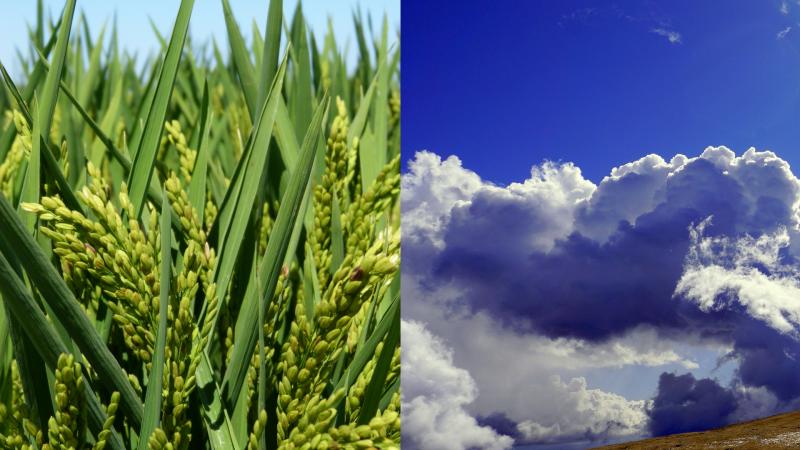
Ask a rice grain, “where are you from and what’s the climate like there?” and it will answer you. Yes, the humble rice we eat every day can be a climate historian, says a new study by researchers from the Indian Institute of Science (IISc), Bangalore. In a first of its kind attempt, they have demonstrated the potential of rice grains as recorders of relative humidity—the amount of water vapour in the air, and the changes in monsoon.
“Understanding the long-term variability of the southwest monsoon over India is a key scientific question to our modern society. Like today, rice cultivation since the Harappan civilisation depended on monsoonal rains. Hence, rice can confirm monsoonal variability in the past”, says Dr. Ritika Kaushal, Research Associate at the Centre for Earth Sciences, IISc and one of the authors of the study published in the Journal of Geophysical Research: Biogeosciences.
The study proposes a linear relationship between the stable isotope composition of oxygen and carbon in rice grains, with relative humidity. Isotopes are atoms of the same element that have the same number of protons and electrons but differ in the number of neutrons. There are two stable isotopes of carbon and two for oxygen that were used in this context. The proposed relationship can help in understanding the climate parameters prevalent when the rice was grown.
“The present study explores the potential of rice grains to serve as recorders of climate. Application of the study might give us clues on the climate prevalent during Harappan civilisation and the factors that might have contributed to its eventual collapse around 3,000 years before present”, say the authors while talking about their study.
The researchers collected 105 varieties of rice grains from 23 different locations across India grown during the rainy seasons, from 2010 to 2014. The study sites ranged from Jammu to Andaman and Nicobar Islands and lay in different climatic zones. They then studied the oxygen and carbon isotopes in the rice grain, which depend on the relative humidity in the atmosphere and the water that was used to cultivate.
Further, the researchers calculated an ‘enrichment parameter’, which is the adjusted value of oxygen isotope after removing the contribution from source water. This parameter was found to be strongly dependent on the relative humidity, implying that as the humidity increased, the enrichment of oxygen in the rice grain decreases. The researchers have proposed the linear equation based on this dependence.
Similarly, the researchers calculated a ‘discrimination parameter’ for carbon isotopes in rice grains by removing the effect from atmospheric carbon dioxide, and established its relationship with relative humidity. The results prove the influence of relative humidity as a driver of variations in both oxygen and carbon isotopic composition.
The researchers claim that besides understanding the past climate, the results can also help in the authentication of rice grains. “Food authentication involves proving the geographic origin of the food, which is important for food safety, food quality, and consumer protection. For instance, basmati rice is a geographical indication denoting a particular type of rice from the foothills of the Himalayas. The properties yielding high market value for basmati can be attributed to the geographical origin and the prevalent conditions. Not surprisingly, there is an alarming number of adulteration cases, especially by the exporters. The present study provides the geographic characterisation of the most commonly cultivated rice varieties in India, including a few basmati varieties and presents an index for rice-grain authentication”, explains Dr. Kaushal.
The study has demonstrated that one can derive climatic information of the past using well-preserved rice grains from archaeological sites. Considering that ours is a monsoon dependent country, these findings help us understand the long-term variability of the southwest monsoon. The results could also help us identify climate-resilient rice varieties for uncertain climate scenarios of the future.
Extending the study, the researchers also wish to get wheat talking! They plan to understand the dependency of wheat on the climate parameters. As the grain is cultivated in India during winter, one could use wheat as a recorder of winter monsoons.






